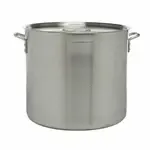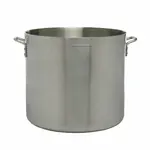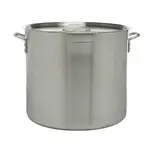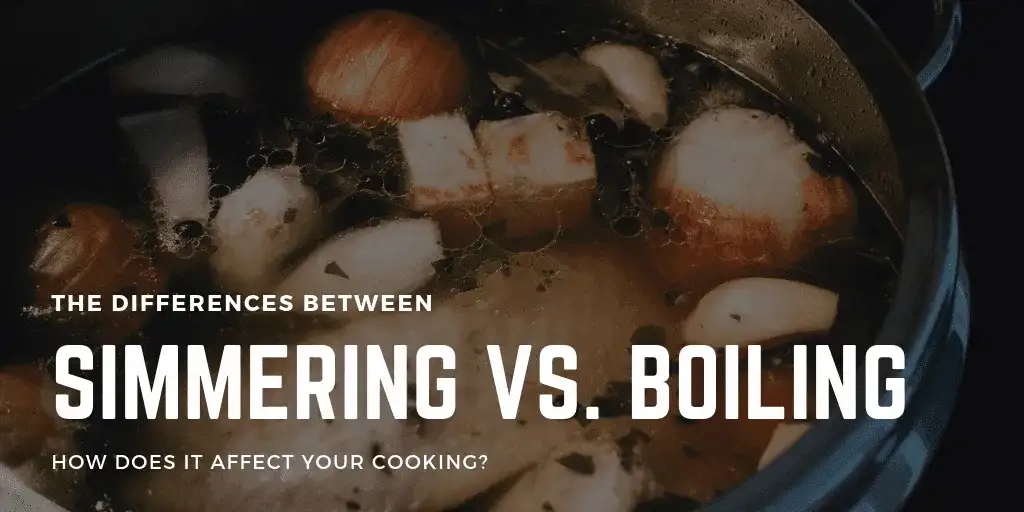
The Differences Between Simmering Vs. Boiling: How Does It Affect Your Cooking?
Simmering and boiling aren’t actually that much different. In fact, they’re variations of the same cooking method. It’s essential to know the difference between the two because if you choose the wrong technique, it can potentially ruin a meal.
Let’s talk about how the two terms differ. First, let’s answer the questions: what is simmering? What is boiling?
What is Simmering? What is Boiling?
As mentioned before, these two methods are only different by a variety of degrees. So, what does simmer mean in cooking? It’s a technique of cooking food at a slightly lower boiling point, usually around 180 to 190 degrees. By cooking the food for a lengthier amount of time, it allows flavors to sink into the food and mix in perfectly.
Since you have to pay attention to the temperature, simmering is the more complicated process. Look for the water shimmering, and a few bubbles coming to the surface. What is the simmering cooking technique? Simmering cooks the food slowly, so it also takes longer than boiling does. Keeping the water at a simmering level is what makes this technique hard. If it gets too hot, it’s no longer simmering. If you let the heat get too low, then it’s not even heating the food.
As for boiling, this is when you cook food at a high temperature. The usual temperature to boil water is 212 degrees, which is the boiling point of water at sea level.
You know water is boiling when you see a bunch of bubbles coming to the surface and popping. Boiling is the easier one to cook with, out of the two techniques.
The reason you need to distinguish what is simmering and what is boiling is that when a recipe says to simmer and you boil instead, it can actually destroy some of the more sensitive ingredients. The bubbles growing and popping rapidly will jostle everything too much.
Depending on what you’re cooking, it can even change the texture of the food. For example, it can make the meat too chewy and hard instead of being soft and falling off the bone.
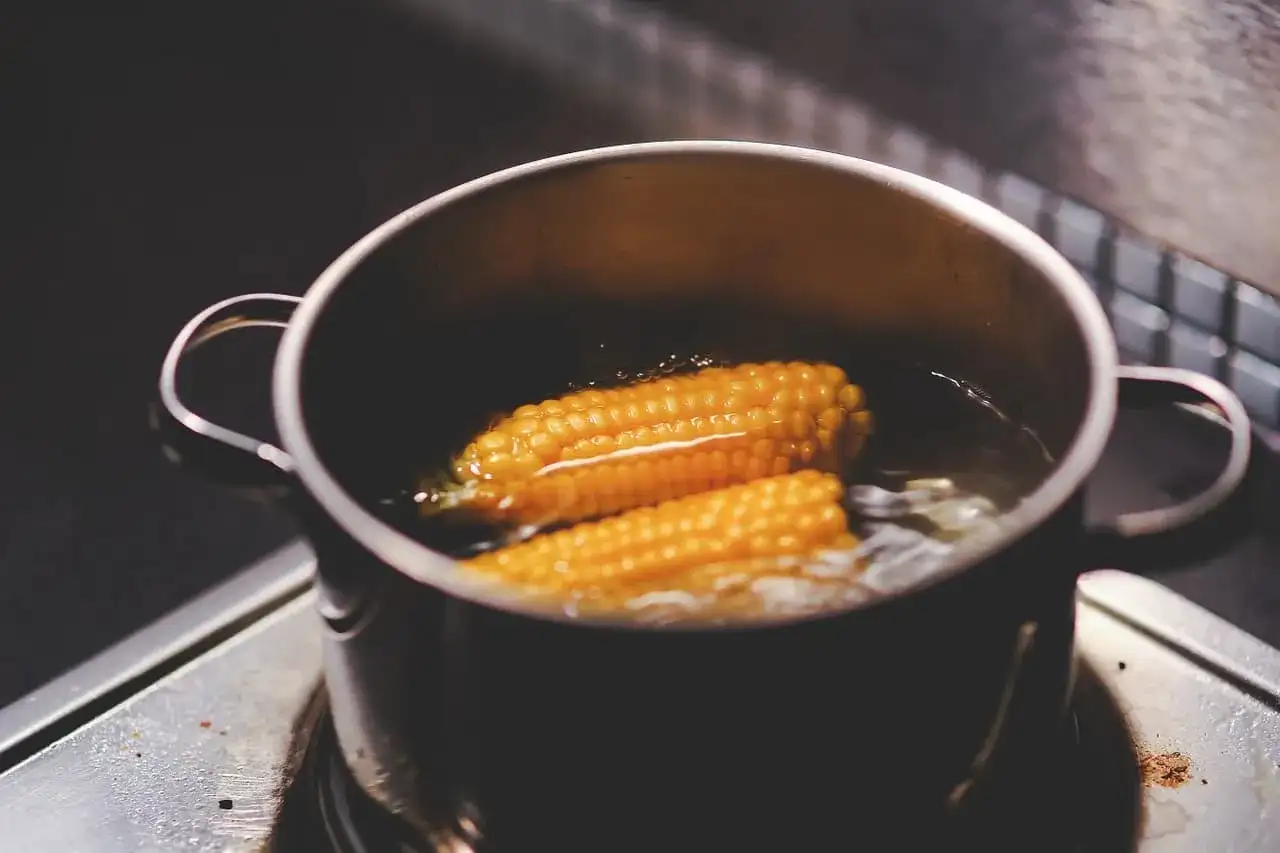
A Quick Reference Guide Simmering to Boiling and Everything in Between
Where people can get confused between what is simmering is when recipes tell you to use terms like slow simmer or rapid simmer. These terms can mean completely different things to different people, so here’s a quick reference guide.
A slow simmer is when there’s not a lot of activity in the pot. You will see a bubble or two, but nothing else because it’s at low heat.
Simmering is little hotter than a slow simmer. It’s around medium heat and has more bubbles. They don’t pop rapidly like with boiling though.
Rapid simmering means that there are more aggressive heating and bubbles without reaching the boiling temperature. It can be one of the hardest techniques to master when learning what is simmering because you have to ride the fine line of rapid simmering and boiling.
Boiling is a lot of heat and bubble activity.
Sometimes recipes will tell you to start with boiling and then bring it down to a simmer. By doing this, the food can heat up quickly but then warm slowly. For example, cooking meat slow enough to become soft or let flavors stew, like in broth.
Foods That Should be Simmered
The big difference between what is simmering and boiling is what food requires which technique. If you mix the two, your food will come out wrong. For example, when you boil something that should be simmered, like veggies, they can come out mushy. Simmering is good for:
- Fish
- Meat
- Stocks
- Chicken
- Broth
- Root vegetables
Foods That Should be Boiled
You use boiling for foods like:
- Pasta
- Green vegetables (to keep their flavor and color)
- Reducing sauces
- Some grains
- Eggs
How Much Time Does It Take to Simmer or Boil?
The amount of time depends on what kind of restaurant kitchen cooking equipment you’re using and what cooking utensil. Restaurant smallwares like saucepans will take less time than pots because there is less volume.
As you are learning what is simmering, keep in mind what kind of stove you’re using. A gas range stove usually heats up faster than electric and gives you better heat control, though any good electric stovetop will do the job properly.
If you are worried about something not being cooked long, don’t be afraid to give it a couple of extra minutes.
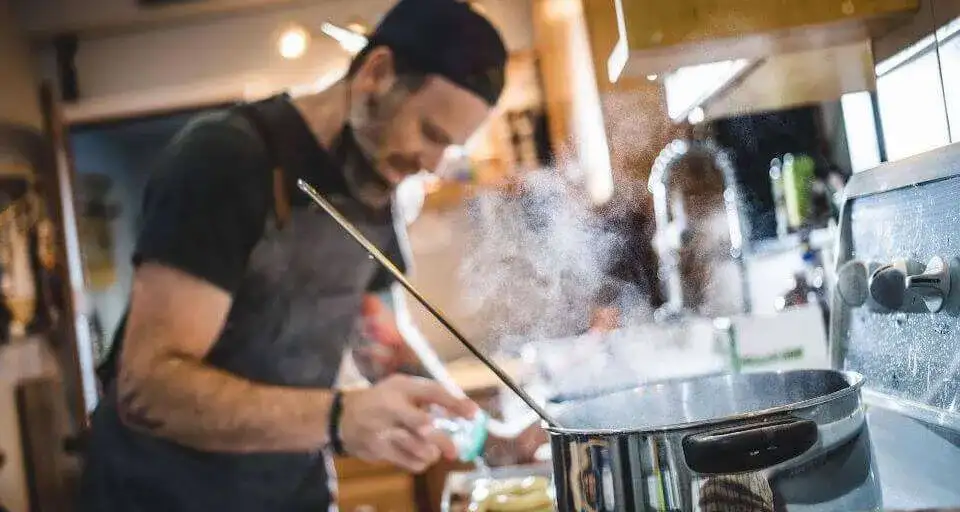
Keep Your Eye on the Water
The most important thing to do whether you’re simmering or boiling is to keep an eye on the water. While it’s not possible to burn water, you can ruin your food if you let the water get too hot. It may take a while to get the hang of, but with practice, you will become a master.
As you learn more about what is simmering, you may hear about using salt to make water boil faster. It’s a myth, while salt will create more bubbles and make it seem like it’s boiling, it’s not. Instead, the bubbles are a temporary thing and don’t raise the water temperature at all. It’s really more of a flavoring thing.
Boiling Vs. Simmering: Final Thoughts
Remember, as you learn more about what is simmering, there are different types of simmering, and they can affect how your food tastes and feels. Sometimes with simmering, it can release the fat and proteins out of the meat you are cooking. It usually floats to the top. You can choose to stir the fat and protein back in, or you can take it out for a clean and clear broth.
Hopefully, this answered your questions about what simmering and boiling are and showed you how you could use it with your next meal. It may take some practice and experimentation, but you should be able to simmer and boil with ease.
